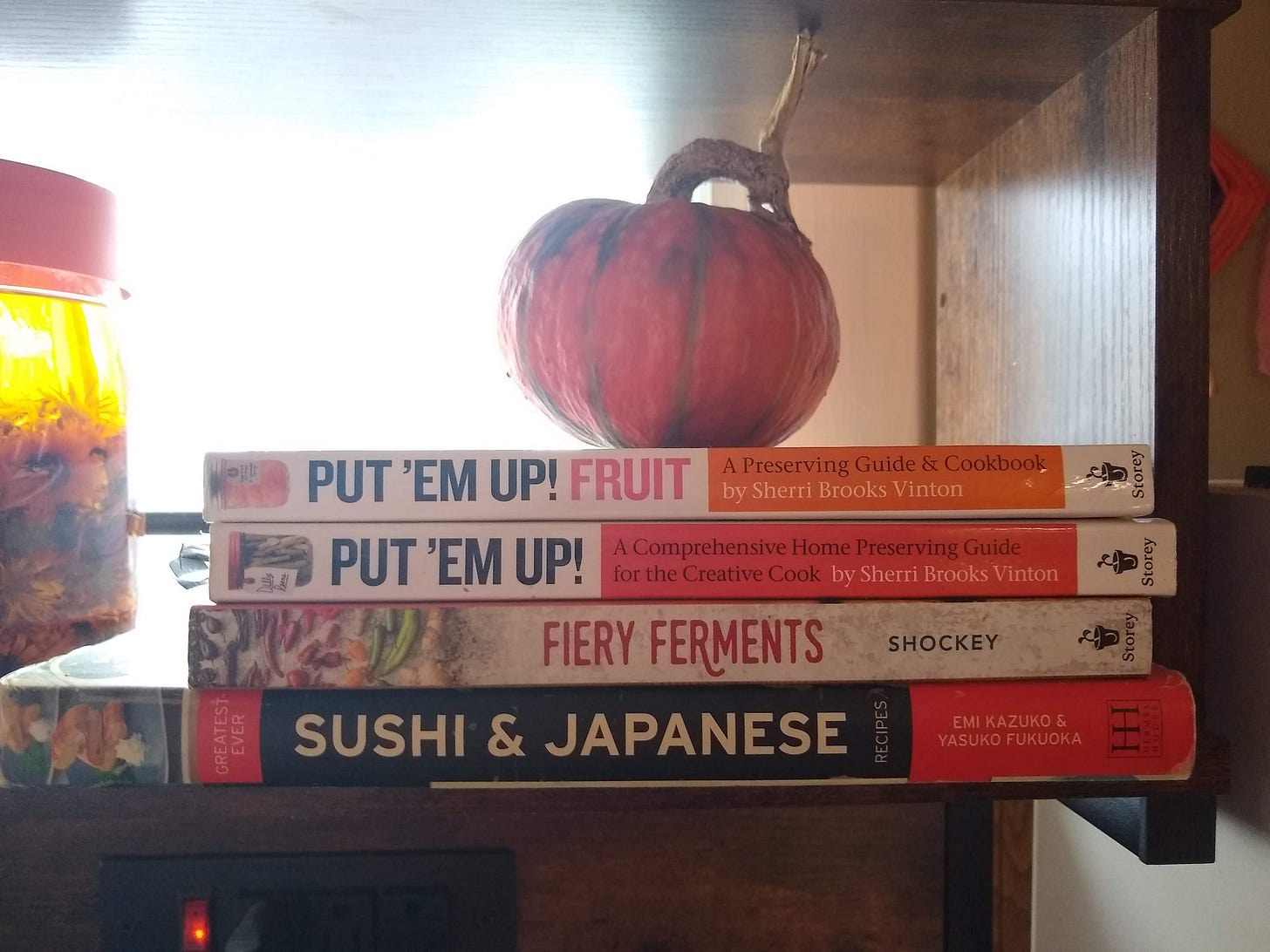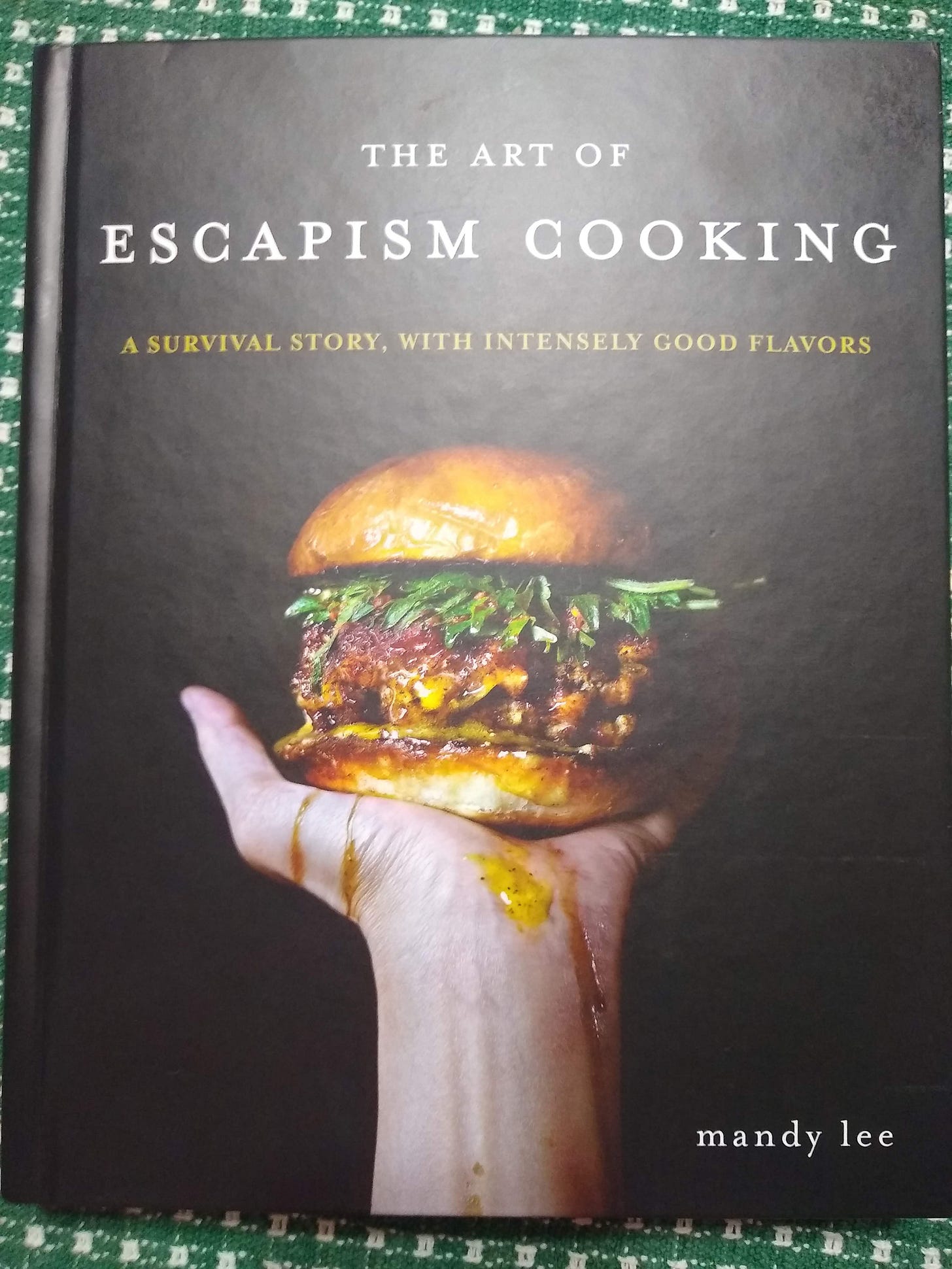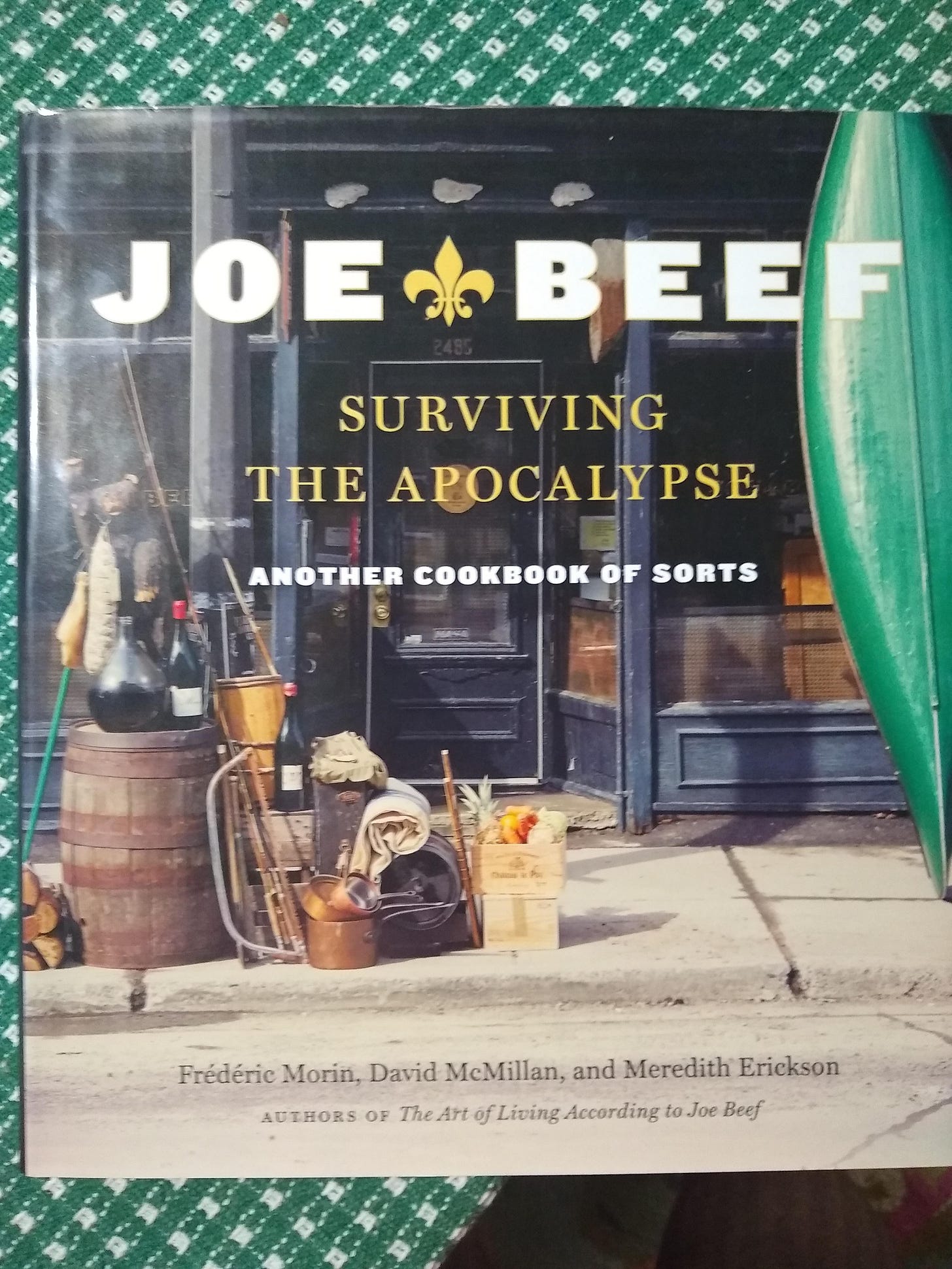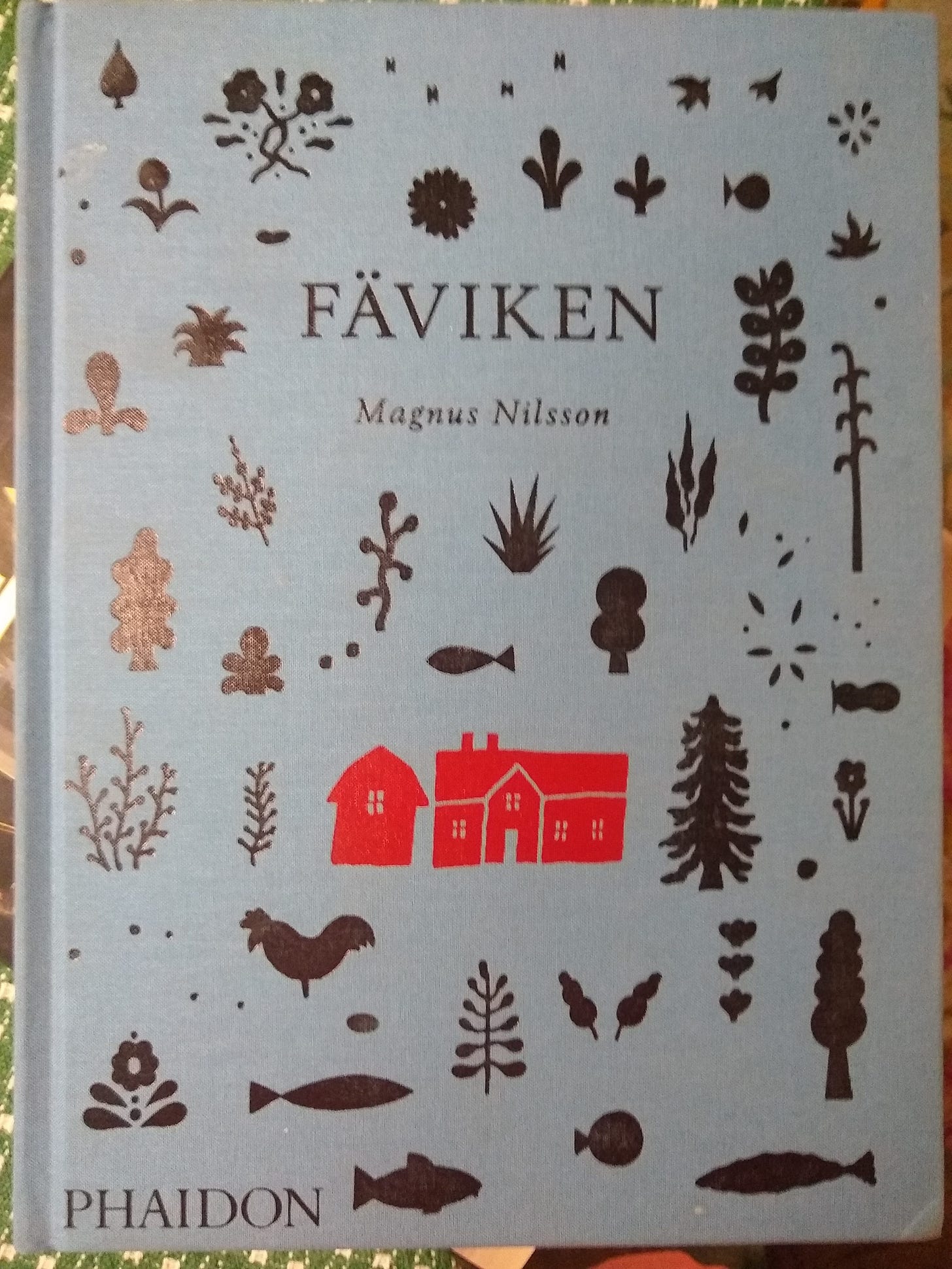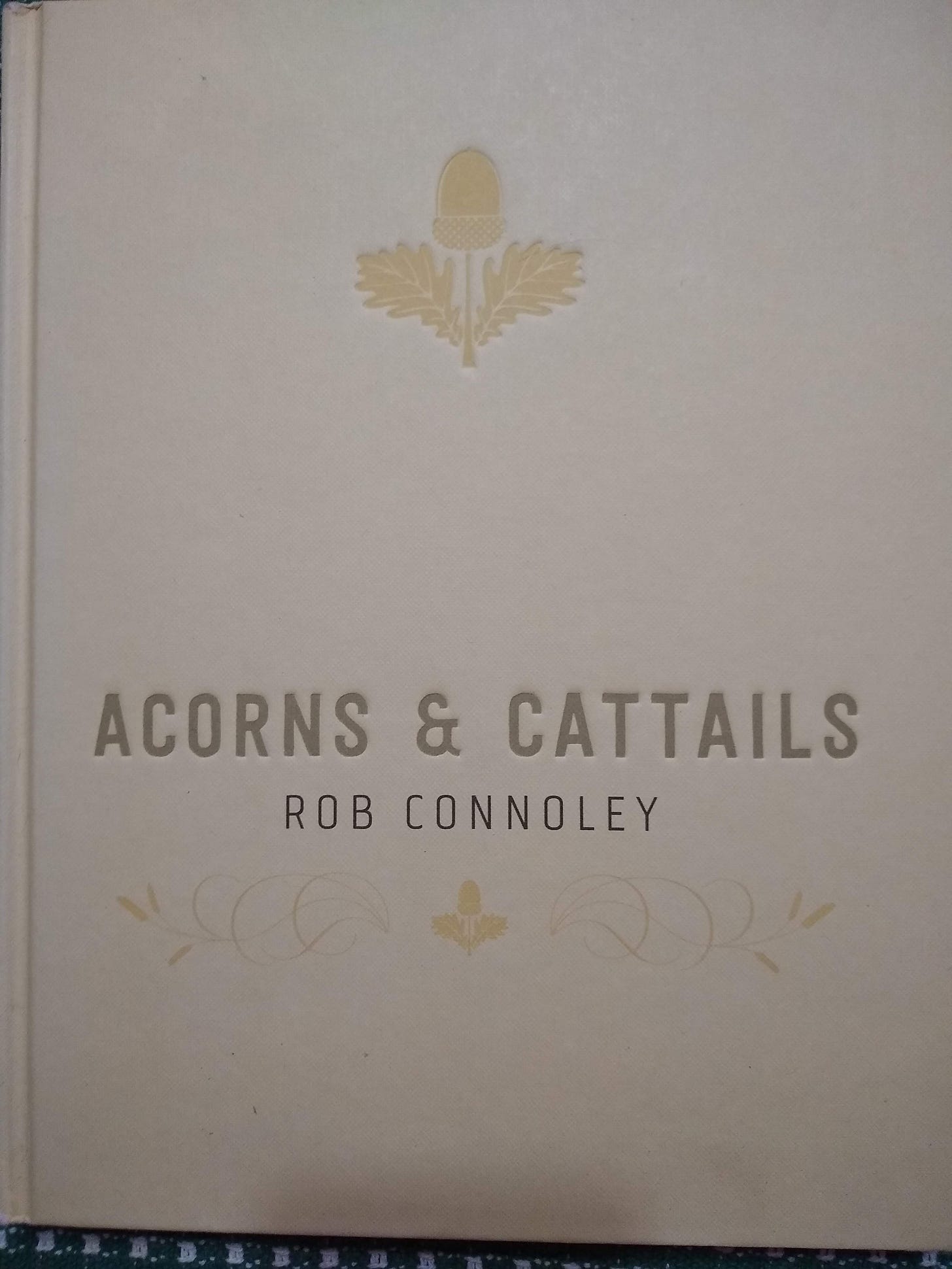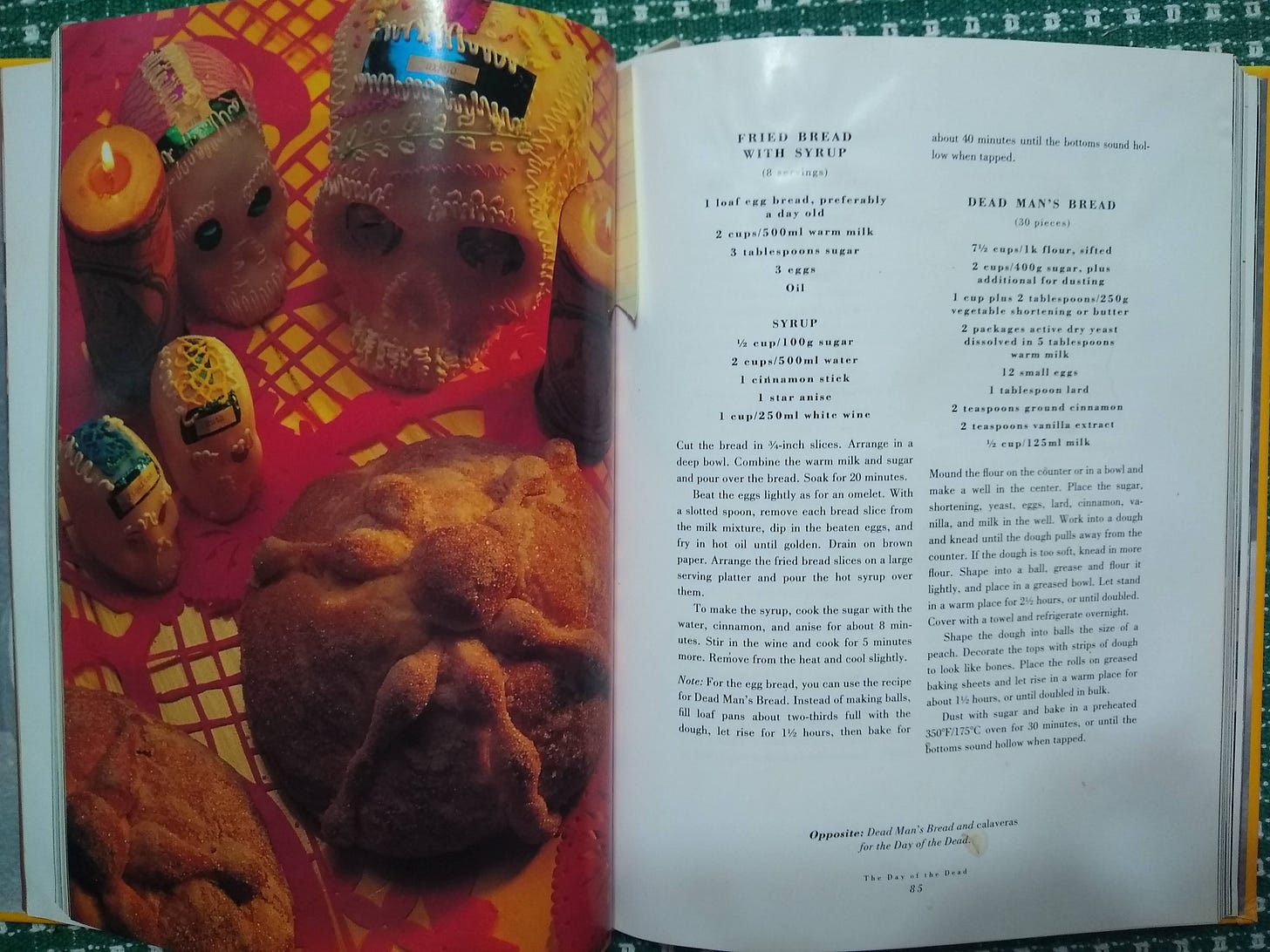I’m reading Small Fires by Rebecca May Johnson at the moment, and some things she said there put me in mind to re-read My Kitchen Wars by Betty Fussell and The I Hate to Cook Book by Peg Bracken,1 and meanwhile I have also been doing some writing about mathematics and proofs and so anyway I’ve been thinking a lot lately about recipes, about what kinds of knowledge they represent and what kinds of cultural artifacts they are.

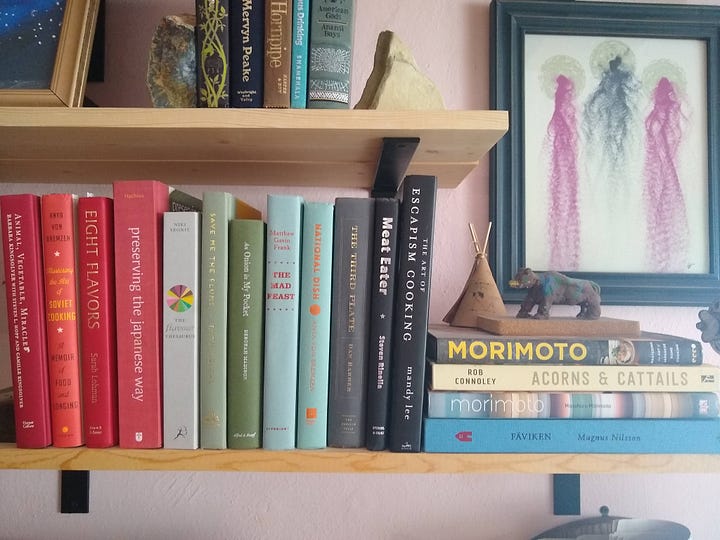
As anyone who knows me well can tell you, I have a fairly large cookbook collection. I don’t keep cookbooks around that I truly never use, but the kinds of use vary. I have cookbooks that I never cook from but that are important to me as aesthetic or philosophical documents. I have cookbooks whose authors I have learned have tastes similar to mine, so when I decide to try a new recipe from those books, I follow it to the letter even when it seems odd to me. I have cookbooks that I don’t use often but contain a few special recipes that, when I want them, I want them. And, of course, I have a large variety of canning, fermenting, and food preservation cookbooks for that whole thing I do in the summers.
I intend to do a series here on some categories of cookbooks, writing a little about why I have each category and a few of the books in that category. Today, in a sort of homage to Small Fires, I want to talk about the recipe as fiction and highlight some cookbooks I have and would never dream of giving up but that I never cook from.
“Then he reflected that reality does not usually coincide with our anticipation of it; with a logic of his own he inferred that to foresee a circumstantial detail is to prevent its happening. Trusting in this weak magic, he invented, so that they would not happen, the most gruesome details.” — Jorge Luis Borges
People often talk about reading fiction as a way to escape reality, at least partially or some of the time. When you read fiction, I think it’s common to conjure the world of the book — the scenery, the layout of the house, the characters’ faces, manners, and even voices — or some portions of it, and for some of us, at least some of the time, it can feel that we’ve come to inhabit those worlds. Some people think this is good, some people don’t seem to be able to do it much if at all, and some people think it is bad; meanwhile some of us have very vivid imaginations, kept well nourished via a steady stream of text about places and people and situations we have only lived through text. For me, there is a whole class of cookbooks like that as well, which is why I read cookbooks even when I do not cook from them.
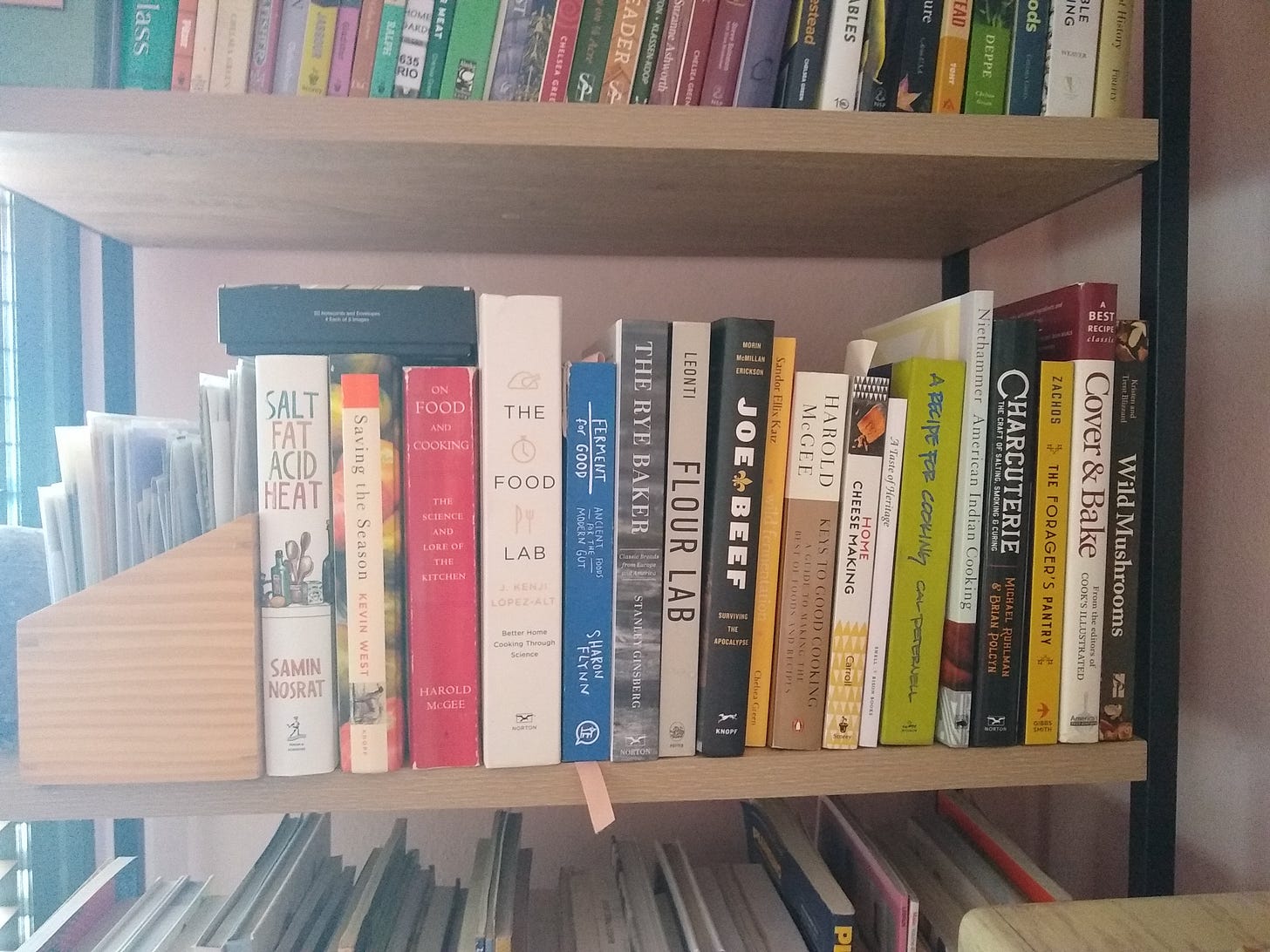
So, my cookbook collection never seems excessive to me, although I know it can to others. I am always hoarding little bits of cooking lore, little astuces, little unexpected spice combinations, little aesthetic charms to work from each of them. And I come back to them again and again to get more. I can often conjure up the food on my mind’s tongue the same way I can conjure nineteenth century Missouri from a Mark Twain novel. I don’t always need to cook and eat it to feel that I have experienced some significant part of the recipe, or even understood it, sometimes. Although to say this is, perhaps, akin to saying that you have understood Shakespeare without ever seeing any Shakespeare performed. Which is to say I think it’s possible, but also that the understanding is not complete and is perhaps more personal to you than what the author intended, as if you care about authorial intent.
Recipes have some things in common with fiction, but they are fictions that can be performed or brought to life. I’m not sure they have to be performed to be valuable, though. I think this kind of cookbook has to be really vivid in the way it is written and have a particular, subjective viewpoint it wants to get across — like a novel, really. This kind of cookbook will offer you very wild and sometimes not very delicious sounding combinations of ingredients and sometimes very complex techniques to achieve very specific effects.
These kinds of cookbooks can be fun to cook from, and I have some that are roughly in this category that I do occasionally cook from. But the techniques involved can mean that following the recipes takes a lot of time and effort that I don’t always have, and the wildness of the ingredients in some cases means I can’t always have access to those ingredients. That doesn’t mean I can’t imagine what the foods are like, and use that imagined version as a jumping off point for inventions of my own, with what time, effort, and ingredients I do have.
The Art of Escapsim Cooking by Mandy Lee
I heard of this book from a Twitter friend (hi, Matt). Twitter friendships can be pretty great; as many of you know, I am now married to a Twitter friend, after all. I am so glad I own this book, but in many ways, to me, it feels wrong to cook these recipes. This book feels like reading someone’s diary, and you wouldn’t cook from someone’s diary, would you? Well, maybe you would, but to me these recipes feel like such a personal document that while I peruse this book and its lavish photographs often, and my mouth waters when I do, I have never cooked a single recipe from it. I might someday, I can’t rule that out. But I don’t need to do that to have found it valuable. I don’t even need to do that to have found joy in its ideas and solace in its flavors. I have cooked around it, you might say, and it often makes me want to go to the kitchen when I am not feeling myself, to find myself in a bowl of something spicy. You don’t literally become Scout when you read To Kill a Mockingbird, but you hope that you can act with a bit of her or her father’s bravery after you have done. So it is with this book; I would like to be as brave in the kitchen as Mandy Lee.
Joe Beef: Surviving the Apocalypse, Another Cookbook of Sorts by Frédéric Morin, David McMillan, and Meredith Erickson
This is another cookbook with such a strong voice, such a definite perspective, that it feels like you’d have to be an actor to truly perform one of these recipes, become someone else. One of the recipes is for a version of Paul Bocuse’s famous “VGE soup” with canned broth. The introductory text to this recipe says, “Take it at face value, a bit like a joke, or read into it, and realize that some great stuff ends up in cans…” This could have been the introduction to the book itself.
Is it a joke or are they serious, or is there even a difference? The point of this cookbook is survival and all along the book seems to be saying that surviving is only worth it if you do it with and for joy. True to the apocalypse theme, this book has recipes for things like cough drops and pantry staples such as sauerkraut — things you might make — side by side with recipes for things like horse ceviche and deer beer belly, which you will probably never have the ingredients for, unless there is an apocalypse and most certainly not then either. Each recipe gives a list of equipment you will need up by the ingredients list, and (at least?) one of them says “patience.”
Fäviken by Magnus Nilsson
This book strikes a completely different mood to the two just mentioned. This book is serious but rather than being intensely situated in the personal, like Lee’s, it is intensely situated in the local. It is a book completely of its place. I suppose the restaurant whence it comes was, too, like Noma supposedly is as well, but I can’t go there. What I can do is read it as a philosophical statement about the importance of place and season. There is no point in trying to replicate these recipes in a different place or season.
Our trout here will taste a bit different to his trout, and this book only wants you to honor the trout as it tastes in your place and not try to make it taste like trout from a different place, or, worse, trout from nowhere in particular. Maybe there are some places where none of this makes sense, but in Montana, it very much does. Montana isn’t Sweden, though, so these recipes are clearly impossible here. But they make me think of what we will do with the foods we have, how best to make something that tastes like nowhere else. I like to think of this, even when I do not or cannot always do it.
Acorns and Cattails by Rob Connoley
This one, like Fäviken above, is centered on ingredients that you can’t buy in a store and may not have locally available at all. In many cases you cannot even reliably order them online — in this day and age! I have several cookbooks like this, focused on foraging and on strange vegetables no one thinks of anymore although they are domesticated plants (cardoons, dandelions) as we like to forage and we like to eat the weeds that our property supports as well. The first cooking ideas for using the foods I was foraging, way back when my older son was a toddler, were like, “put chickweed on a sandwich like lettuce,” and “use wild sorrel as a substitute for spinach in soups.” I wanted, though, to treat these ingredients with the same respect we treat store-bought lettuce and spinach. Acorns and Cattails was one of the first that I found that did so. I don’t use it much, while I do use several of my other foraging cookbooks, mainly because it uses a lot of ingredients we don’t have locally and the recipes are very “cheffy” which I don’t always have the time and energy for after a long day foraging. But I always want to the possibility of using it, and I make reference sometimes to some of its pages for ideas.
I want to include one more here even though I do cook out of it sometimes. It is Frida’s Fiestas by Guadalupe Rivera and Marie-Pierre Colle.
I include it here because, although I have used a few of the recipes, my main use of this book is still very similar to those above. This book is above all a reminiscence of life with Frida Kahlo and Diego Rivera, written by one of Diego Rivera’s daughters. The narrative of life with Friday, though, revolves around celebrations and parties she would put on and the food she cooked for those. Each month features a menu for whatever celebrations would have occurred in that month, with recipes for each dish in the menu. I like to look at it in the appropriate month, especially if I feel a need to throw a party.
The recipes do work and can be followed, and the food is very good, which makes it quite different from many of the books of this type; unusually for this genre, it can really be used as a cookbook. If you’re one of these “Mexican food is just tacos” people, this book would, I suppose, be quite a shock. I’m not sure there are any tacos in the entire book. The recipe I have cooked the most from it is for “Dead Man’s Bread,” a bread served on the Day of the Dead. You can see the spatter from my cooking! But, while the recipes are good, I do look at it much more often than i cook from it. For me, it is more inspiration than instruction.
I am able to write this long post romanticizing a certain type of cookbook because there is a utilitarian (though tasty) lentil and red pepper soup cooking away in the crockpot right now. The red peppers are ones I bought at the farmers market last summer and preserved in oil and vinegar2 for wintertime eating. All that work, and the work of turning out nutritious meals for four people, once or twice a day, everyday, is why I can’t always take the time for the cheffy things. I want to be amazing, but sometimes life and all that I want to do with it are too much. I guess the important thing is to keep these things in balance, the desire for fancy and new foods versus the utilitarian needs of the family.
Tonight, it’s lentil soup, but yesterday I did make fresh vetkoek (fried bread) with South African curried beef inside. I served it with jasmine pickled peaches, curry pickled cauliflower, and a couple of chutneys I made last summer. And we ate those leftovers for lunch today, hallelujah.
Some days you can spend five hours kneading, shaping, and frying delicious little breads, and some days you cannot. And even the days you can, you can feel glad to have these vegetable “side dishes” already ready to go. Can we call this cook-life balance?
This week’s menu plan was inspired by two of these books.
With capers, which I guess I did intending to use these peppers in salads. But now they are in a soup and do you think capers in soup is going to be ok? Whoever heard of such a thing! It’ll be fine, Julie, stop worrying.





